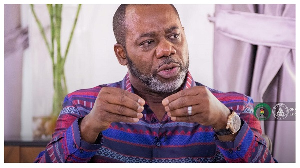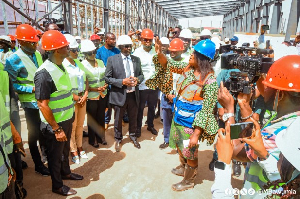There has been several postponements for its implementation all due to member countries not meeting laid down criteria.
This is the concluding part of the article which assesses the realities the West African sub-region is confronted with in its quest to have a common currency. The first part was published last week.
Factors that have drawn back the WAMZ and the single currency to be realised and used by member states show off in a number of reality checks.
The realities
Ominously, an analysis of these pitfalls calls for redirection and the commitment from member states to execute set targets so as to benefit all that they envisage under a new single economy.
Reports and several studies conducted by the likes of Bonsu (1989), WAMI (2004 & 2009), Maclean (2010) and Amoah (2013) indicate that the only country to have met all the fundamental and primary convergence criteria for ECO in 2011 was Ghana, though facts remain that Nigeria and The Gambia achieved favourable results on the primary convergence criteria.
An assessment on some of the conditions for assessing an Optimum Currency Area shows varied results with a lot of them being unfavourable for the creation of a monetary union by the West African Monetary Zone.
On inflation, it is only Ghana and The Gambia that were able to achieve below the reference value in the year 2011. The Gambia and Ghana managed an inflation level of 5.4 per cent and 8.6 per cent respectively at the end of 2011.
Three countries including Liberia, Sierra Leone and Guinea had an inflation rate of 11.5 per cent, 16.9 per cent and 19.0 per cent respectively with Nigeria recording an inflation rate of 10.3 per cent; above the reference inflationary value of a single digit.
Also, the average GDP per capita among the Eco countries shelves them into two groups, making it difficult to achieve a monetary union. That is in terms of economic development or in the size of output or standard of living. Ghana and Nigeria are noted to be middle income economies, while the other four WAMZ’s participating countries of The Gambia, Guinea, Sierra Leone, and Liberia are known to be low income economies. The standard of economic development in the WAMZ is really not identical for a common currency union.
Furthermore, a lot of the WAMZ’s economies are either dominated by the agricultural or the services sector. It is only Nigeria that is dominated by the industrial sector. It is suggested that member countries with comparable sectorial composition of GDP stand in a better stead for the formation of a monetary union as they are all likely to undergo the same economic shocks. But as it stands, conditions differ for the WAMZ member states. Indeed, the fundamental structures of their economies on exports indicate that most of the WAMZ member countries depend largely on primary products.
This means that with the formation of a monetary union, the WAMZ member states are likely to experience external shocks from international or external trade as a result of deficits that would be experienced in their balance of trade.
And since most of the WAMZ’s member countries are dominated by the primary or agricultural sector, the issue of intra-regional trade would be predominately low in the sub-region vis-a-vis that of intra-regional trade.
According to Amoah (2013) “the member countries of the WAMZ are very open to external trade as their average ratio of export to the GDP is more than 50 per cent and that the level of internal trade is very low for the participating countries to benefit from the use of a single currency as none of the WAMZ member countries exports more than 10 per cent of their products to any of its members as compared to the Euro-zone which was more than 40 per cent before its commencement.
Also, the low level of labour mobility and the low diversification of industry product make the formation of the monetary union by the WAMZ unfavourable”.
A drawback again observed, is the level of political will and the public enthusiasm to support the execution of a single common currency. The political will is non-existence or not strong enough to quicken the creation of the single monetary union.
A lot of the WAMZ states are sluggish or unenthusiastic to execute programmes and strategies to advance and improve the macroeconomics convergence for the realisation of the single financial market. Could this also be seen for the proposed new currency too?
Observations are that member countries of the WAMZ are not doing well enough to meet the targeted convergence macroeconomics criteria. Fundamentally, the success of the WAMZ single monetary union has undergone several challenges.
There has been several postponements for its implementation all due to member countries not meeting laid down criteria. Nonetheless, the union must be built on a solid foundation to improve upon conditions and optimise the advantages found in a common currency zone.
With a new dimension of roping in all member states under a new four criteria target, it is being advocated that the WAMI becomes empowered to forcibly engage all the member states to meet the set targets. With this, WAMI can put in place some enticements to encourage the sixteen states to attain the new feasible goals.
The European Union implemented a model whereby the EURO ZONE got underway with some countries starting and others joining later when they had met the criteria. This can be adopted by WAMZ to quicken the pace of achieving the common goal.
Finally, there should be the political will from member states to make the Monetary Union a reality.
If members in the Monetary Zone will be willing to let go off their CFA and individual domestic currencies, then ECOWAS might lead the way in the Africa Region to start with the much talked about common currency; perhaps the” AFRO”.
Opinions of Tuesday, 10 November 2015
Columnist: Ebo Crenstil



















